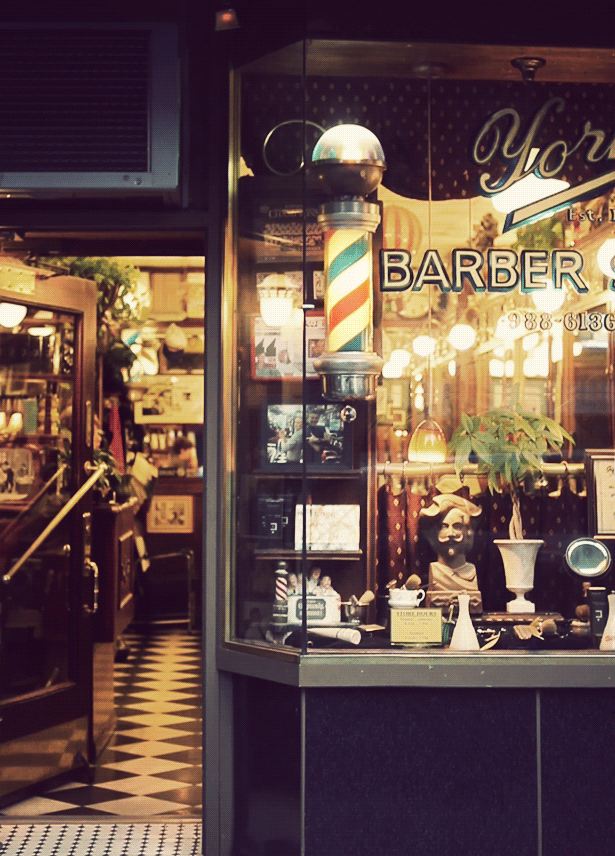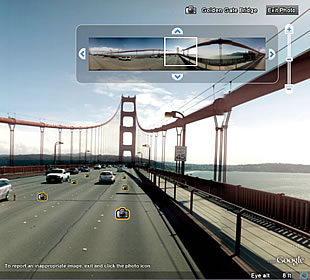One of the reasons the web became so popular is that it made it easy to put photos and text together.
Now we're straining at the limits of static photos. We want them to be more lifelike, not just paintings on a wall. The sway of trees, our wandering gaze, the way we bob and turn our heads to get the shape of a thing. We get none of that with a static image.
Sure, it's getting a lot easier to embed video. But videos are like movies: they demand our whole attention from start to finish, and then they're done. Videos are entertainment, distractions. I'm talking about ambiance, digitized memories.
Here's what I see happening at the edges of what an image is.
Cinemagraphs are just animated GIFs, adding a tiny amount of motion to a scene to give it life. Cinematograph gallery, another one
Lytro has an after-the-fact refocusable lightfield camera. They call their photos "living pictures". Lytro gallery
Several news outlets have been playing with before/after photos of natural disasters. Click-to-toggle before/after / Slide before/after
"360 views" for products are gradually spreading through the online marketplace. Click "360 view" to see an example here: http://www.ford.com/cars/focus/?intcmp=fv-hpbb-dflt-40mpg-focus
A sackful of kludges
Except for the GIFs, every one of these innovative trends has something in common: somebody had to write code to make them work. Street View and Lytro, and many of the 360-degree product viewers require Flash. The before/after photos seem to have been one-off projects by the news outlets.
That's why the images I linked to are just static pictures -- only the .gif actually "works" without clicking on the links. (And the .GIFs themselves are also a huge kludge -- it's an ancient image format that only supports 256 colors, and has been a headache for browser vendors for years).
So none of them are really embeddable; you can't easily save a local copy of them, email them to your friends, or put them into a slide presentation. You can link to the pages where they live, but you're out of luck if the owners ever take the pages down.
Even ordinary product photos suffer from this kludge problem. How many times have you clicked on a product photo to "view bigger", only to get a popup window with the same image, at the same resolution? Some sites use flash, some use popups, some use javascript abominations that obliterate the product's description with a zoomed in image any time your cursor drifts across the product thumbnail.
What does it all mean?
The experimentation is good. People are exploring, seeing what catches on. There's a lot of space in the spectrum between static photos and video, and we're not done exploring it yet.
We don't even have good names yet. "360 view" is starting to catch on for drag-to-swivel product photos, but there doesn't seem to be any standard way to talk about the before-and-after photos, or any mental framework that lets us explain how they relate to 360 views or cinemagraphs.
And we need tools. Lots of creative people don't have the programming skills needed to build prototypes like these. And viewers get old and rickety quickly -- flash was the only way to do this stuff a few years ago, but everything you see here could be done just as well in html5.
My humble contribution to the space is the swivel viewer, which actually could be coerced to work for most of the things I described here. It proceeds from the notion that a set of images is better than a single one; drag your mouse to flip between images, scroll to zoom. But it's not embeddable, awkward for cinemagraphs and useless for panoramas.
Eventually we're going to need file formats that bundle these things -- whatever you call them -- into a single file, browsers that can embed them, and editors that let us create and tweak them.
I have no idea what that's going to look like, but whoever creates it is going to enable the expression of a lot of pent-up creativity.






No comments:
Post a Comment